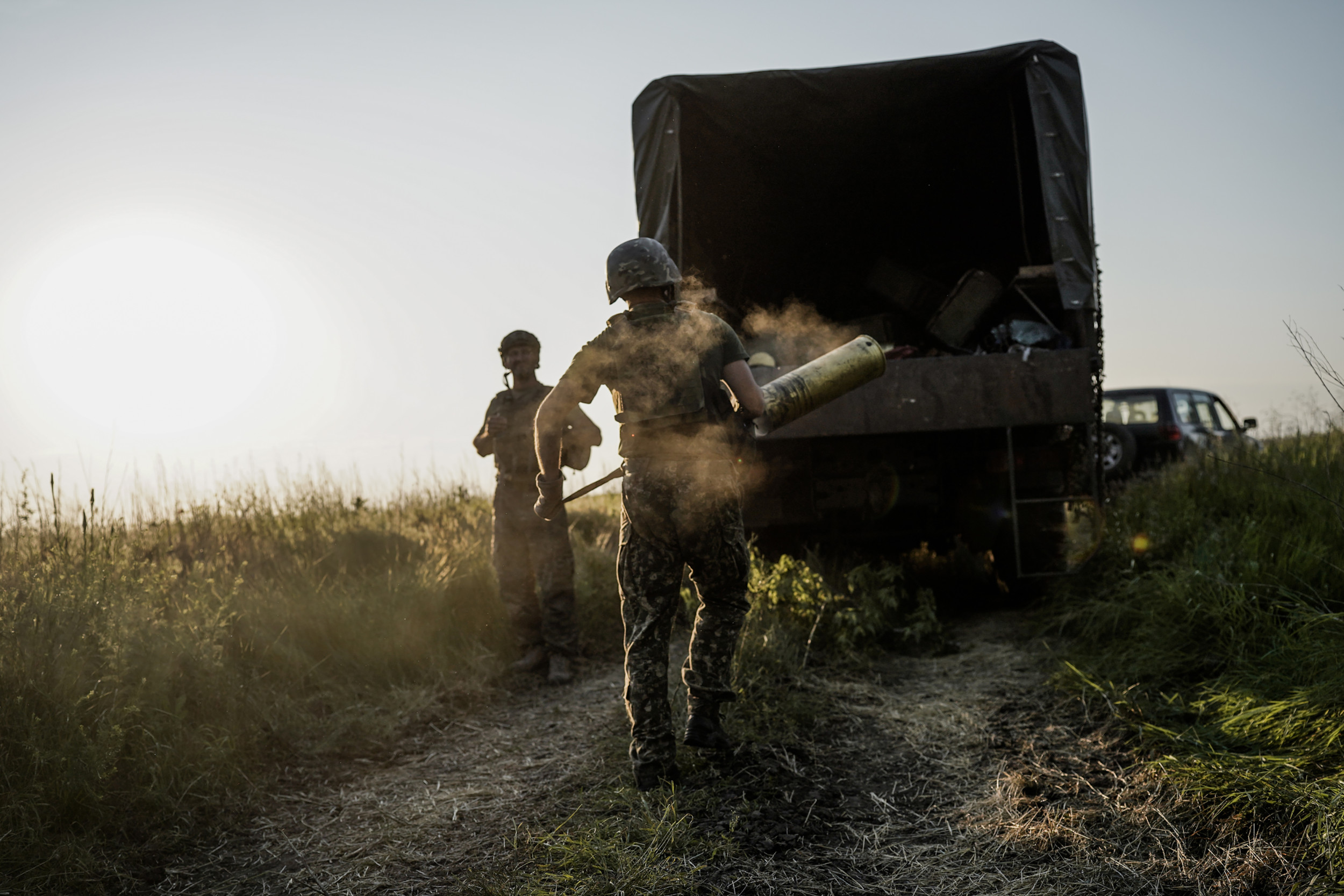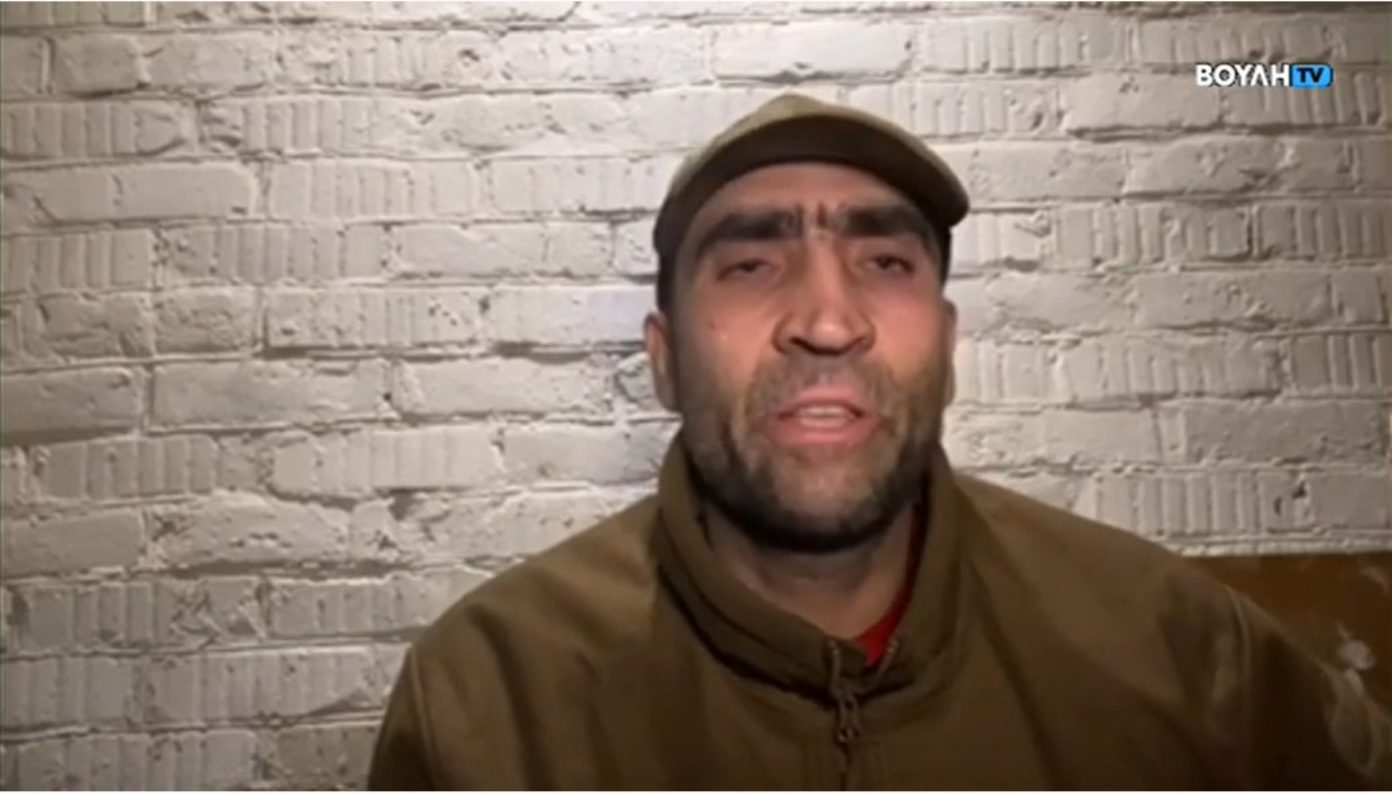Azov Storms And Clears Enemy Positions - A Look Inside
When we talk about the situations where forces move into tough spots and push back against those holding ground, it’s a story of grit and determination. There are moments, you know, when a group really steps up, and they take on the task of moving through difficult areas, making sure that spaces held by others are no longer occupied. This kind of action, where a unit advances and secures areas, is a big part of what happens in serious conflicts. It shows a real commitment to getting things done, to changing the layout of the land, so to speak, for their side.
The unit we are looking at, known as Azov, has, in a way, been at the center of many such moments. Their story goes back a bit, to a time when things were really starting to heat up in their region. They came into being as a volunteer group, people stepping forward because they felt a strong need to protect their home. Over time, they have taken on a more formal structure, becoming a part of the bigger national defense setup. This change, from a smaller, more informal group to a recognized military formation, is quite a significant step, as a matter of fact.
Their actions, which often involve moving into contested zones and making sure those areas are safe, have drawn a lot of attention. People talk about their work, about the challenges they face, and about the results they achieve. It’s a situation that, in some respects, highlights the very real efforts involved in defending a country. We will, therefore, look at some of the background to this unit, how they operate, and what their efforts mean for the people they serve.
Table of Contents
- What Makes Azov a Distinct Force?
- Azov Storms and Clears Enemy Positions - From Early Days
- How Does Azov Handle Challenging Situations?
- Azov Storms and Clears Enemy Positions - Holding the Line
- The Unit's Dedication to Its People - A Closer View
- Azov Storms and Clears Enemy Positions - Bringing People Home
- What Changed for Azov Recently?
- Azov Storms and Clears Enemy Positions - New Support
- Understanding the Azov Name - Where Does It Come From?
- Azov Storms and Clears Enemy Positions - Geographic Ties
What Makes Azov a Distinct Force?
The group we are talking about, the one now known as the 12th Special Forces Brigade Azov, started its life, you know, back in May of 2014. It began as a battalion, a smaller fighting group, during a time when things were really getting difficult for their country. This was right at the start of a serious conflict, one that Russia began. So, you can imagine, there was a real sense of urgency, a need for people to step up and do something to help protect their land and their way of life. This initial setup was a coming together of people who felt a deep personal commitment to this cause, pretty much from the very beginning.
Azov Storms and Clears Enemy Positions - From Early Days
Their official online presence, the website for the 12th special forces brigade Azov of the National Guard of Ukraine, tells a bit of their story. It confirms that they were indeed first put together in 2014, when the war started. This detail is important because it shows their origins are tied directly to the early days of this big struggle. They didn't just appear; they grew out of a specific moment, a time when people felt they had to act. This background, you know, gives some context to why they are who they are today, a unit that, in a way, has seen a lot of action since those first moments. They have, therefore, been involved in many situations where Azov storms and clears enemy positions, right from the start.
How Does Azov Handle Challenging Situations?
One of the more widely discussed aspects of this group has to do with how they are seen by some outside observers. There has been, you know, some talk that causes disagreement, talk about allegations of certain past associations. This talk, which has been quite a big part of the public discussion around them, even led to a point where the United States had put a hold on giving American weapons and training to this specific unit. It was a measure put in place because of these concerns, and it meant that for a period, this kind of support was not available to them. This situation, in a way, made things more difficult for them when it came to getting certain types of help from abroad, so.
- Brady Police Department
- Kathryn Nixon
- Pittsburgh Tribune Review Live
- Cezon10chris Stapleton Trump
- Ann Margaret Bacon
Azov Storms and Clears Enemy Positions - Holding the Line
A very clear example of their ability to handle truly challenging situations came during the defense of the city of Mariupol. For a period of 86 days, this unit, then known as the Azov regiment, was at the forefront of holding that city. It was a long stretch of time, day after day, where they were directly involved in fighting to keep control of the area. This stand was a really significant moment in the conflict, a true test of their resolve and their fighting spirit. It showed, quite clearly, that when it came to defending ground, they were ready to stick with it for a very long time, even when things were incredibly tough. This kind of sustained effort is, you know, what happens when Azov storms and clears enemy positions, sometimes for extended periods.
The Unit's Dedication to Its People - A Closer View
The 12th special forces brigade Azov, as it stands now, serves as the base for a newer, bigger formation within the National Guard of Ukraine. This new formation is called the First Corps Azov. This shows a kind of growth, a broadening of their role and their responsibilities within the larger military structure. It means that the way they operate, their methods, and their spirit are now being used to shape an even bigger part of the national defense. It’s a pretty big deal, actually, to be the foundation for something new and larger, demonstrating confidence in their capabilities and their approach to things, you know.
Azov Storms and Clears Enemy Positions - Bringing People Home
Beyond their actions on the battlefield, there is a very human side to their work, one that speaks to their commitment to their own people. They have a system, a daily routine, that works at all levels to make sure that their captured soldiers come back home. This is a constant effort, something they do systematically, every single day. It’s about not leaving anyone behind, about doing everything they can to bring their comrades back from captivity. They also see a captured enemy soldier as a means to achieve this, as a way to help with these exchanges. This focus on getting their people back is, you know, a really important part of what they do, showing that even as Azov storms and clears enemy positions, they also remember those who are missing.
What Changed for Azov Recently?
In a fairly recent development, the United States made a significant change regarding its policy towards this unit. The ban on providing American weapons and training to Azov was lifted. This means that the concerns that had previously led to the ban have, for whatever reason, been addressed or re-evaluated. This lifting of the ban is a pretty big shift, actually, because it opens up the possibility for this unit to receive support that was previously off-limits. It could mean, you know, new equipment and new ways of learning for them, which could certainly change things on the ground.
Azov Storms and Clears Enemy Positions - New Support
The 12th special forces brigade Azov is, at its heart, a military unit made up of people who serve in the military as their job. It was formally put together on May 5, 2014. What makes them stand out, perhaps, is that their ranks are filled with people who chose to be there, volunteers who are truly dedicated to protecting Ukraine. This volunteer spirit, this deep personal desire to defend their country, is a very strong thread running through the group. It suggests a level of commitment that comes from a personal choice, a decision to stand up and contribute to the defense efforts. So, the new support, you know, will likely go to a group already very much committed to their mission, even when Azov storms and clears enemy positions.
Understanding the Azov Name - Where Does It Come From?
It is interesting to consider the name itself, "Azov." There is a body of water, a sort of inland sea, that sits off the southern coast of Ukraine and Russia. This body of water is called the Sea of Azov. It stretches out from the Black Sea, connecting to it through a narrow passage called the Kerch Strait. So, the name of the unit, you know, might be connected to this geographical feature, suggesting a tie to the region or perhaps a specific area of operations. This connection to a real place, a body of water that has seen a lot of history, adds a layer of meaning to the unit's designation, in a way.
Azov Storms and Clears Enemy Positions - Geographic Ties
Beyond the sea, there is also a town in Russia, in a place called Rostov Oblast, that shares the name. This town, which was once known as Azak in an older language, sits right on the Don River, not too far from the sea itself, about 16 kilometers away. So, the name "Azov" has a history, you know, appearing in different places, both as a body of water and as a human settlement. This connection to a specific geographical area, whether it's the sea or the town, could perhaps hint at the origins or the areas of focus for the unit that bears this name. It's a name that, therefore, carries a sense of place and history, even as Azov storms and clears enemy positions.

Azov says it has driven Russian forces out of some positions in

Video Reveals Daring Night Attack on Russian Troops Behind Enemy Lines

Ethnic Greek Azov Fighter Overshadows Zelensky Speech at Greek